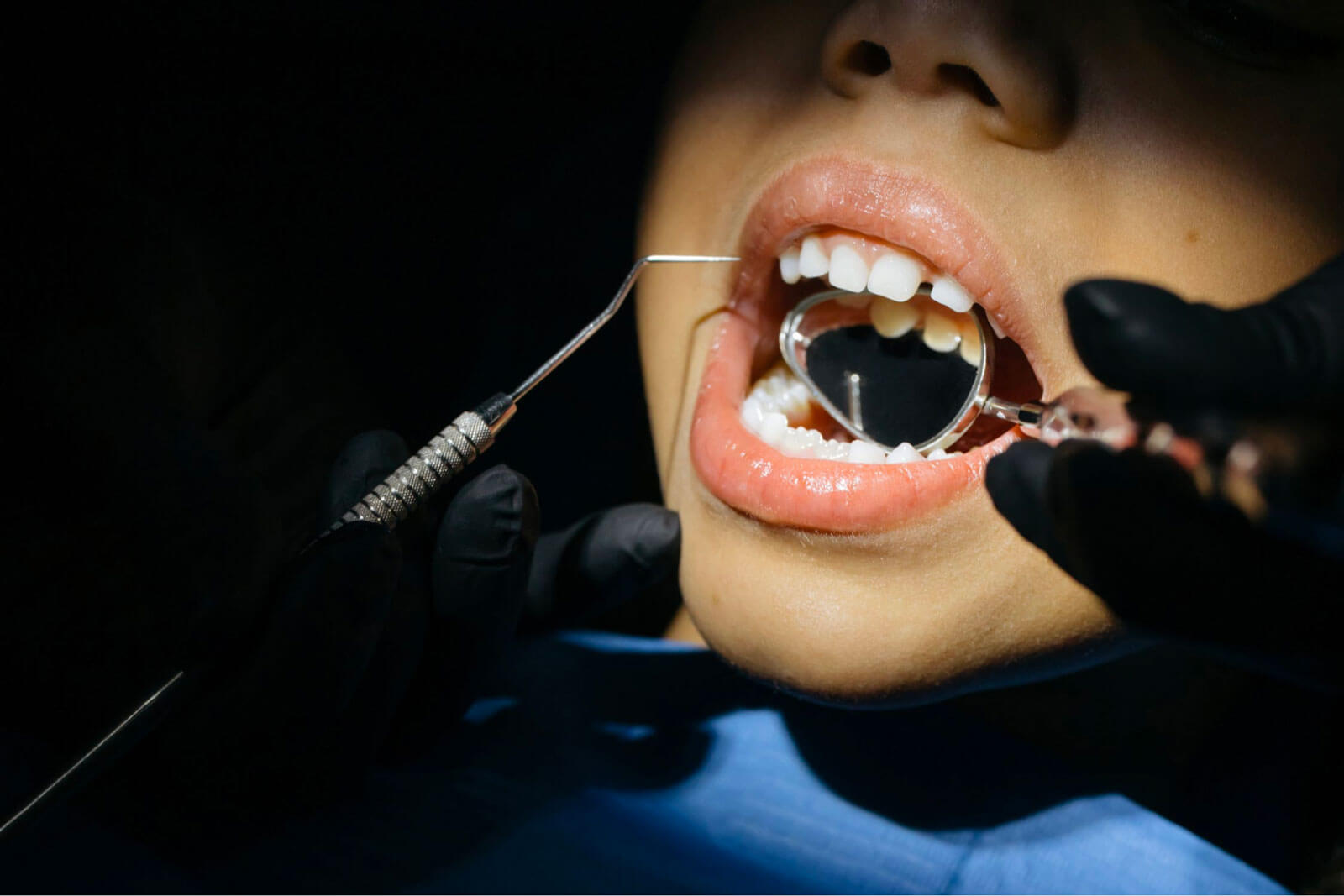Porcelain Veneers vs Braces: Which Is Better for Teeth Gaps?

Let’s look at their differences to see which is the best option for you.

What’s the Difference Between Porcelain Veneers vs Braces?
Porcelain veneers or dental veneers are thin porcelain custom-made shells that cover the front of your teeth. They are permanently sealed in a person’s teeth and can fix several dental issues, including excessive fluoride, irregular teeth issues, and teeth gaps.
Dental veneers are a popular choice for people who want a perfect smile that is aesthetically pleasing in a non-invasive way.
Braces or dental braces, on the other hand, are dental tools that help correct problems with your teeth, like alignment issues, crowding, crooked or misaligned teeth, small gaps between your front teeth, and crowded teeth.

Wearing braces slowly align your teeth as you wear them over time. It has different types, such as metal/traditional braces, ceramic braces, lingual braces, and clear aligners.
- Traditional Metal Braces: These are the most common type of braces, consisting of brackets that attach at the front surface of your teeth or stainless steel bands that loop around each other’s teeth. There are also rubber bands or metal ties that connect the brackets to the wire. These bands create a lot of pressure, resulting in your teeth being straightened and aligned.
- Ceramic Braces: These are hard to notice from afar. Its brackets are available in stainless steel and ceramic.
- Lingual Braces: The brackets of these braces are inserted in the back of your teeth, facing your tongue, making it difficult to view from any angle.
- Clear Aligners: Also known as invisible braces, these braces are convenient and flexible since they are removable.
Pros and Cons: Veneers vs Braces
Porcelain Veneers Pros
- Natural-looking: Porcelain veneers are a type of ceramic that mimics the natural look and feel of the tooth enamel coating, which gives it the appearance of being more realistic.
- Stain-resistant: It is not difficult to remove dirt and stains from dental veneers since it resembles glass, making stains simple to wipe away.
- Instant results: Porcelain veneers only require a few appointments — usually only one or two dental visits before you start seeing results. It does not take months or years of treatment to notice outcomes.
- Improved smile: Veneers are a popular option for people who want to make cosmetic changes to their smile quickly. For example, dentists can use dental veneers to repair teeth gaps without so much downtime, ultimately improving one’s self-esteem.
- Aesthetic improvement: Veneers do not only improve your smile but also the other aspects of your existing teeth such as color, size, and shape.
Porcelain Veneers Cons
- Permanent: Choosing to go for dental veneers is a leap of faith. Once it’s finished, there’s no turning back and it’s difficult to reverse.
- High cost: Porcelain veneers are expensive. Each veneer per tooth ranges from $925 to $2,500, excluding its maintenance.
- Can cause teeth sensitivity: Your teeth may become more sensitive because veneers require the removal of enamel, the outer covering of your teeth. There’s a high chance to be sensitive to hot and cold meals and beverages.
Braces Pros
- Natural teeth: It’s one of the reasons why people get braces. Having a natural, beautiful, healthier smile can make you feel good about yourself.
- Less expensive than veneers: Braces prices range from $3,000 to $10,000 for all your teeth already, depending on what type of brace you want.
- Filing is not necessary: In braces, filing your teeth is not needed, so all of your teeth will remain intact after treatment. This also lessens the chances of having tooth sensitivity.
- Reduce dental-related problems: Braces can fix a misaligned bite that can alleviate pain, trouble chewing, and other problems associated with TMJ (temporomandibular joint) problems.
Braces Cons
- They take time: Treatment time varies. Braces take time to reshape your teeth. The average time of treatment is between one and three years.
- Aftercare: After years of treatment, you still need to wear a retainer for several more years for maintenance.
- Visible: There are types of braces that are very visible. They are not ideal for patients who prefer a subtle, natural smile.
- Difficult to clean: Cleaning your teeth can be challenging with the metal attached to your mouth.
Veneers vs Braces: Which One Should You Pick?
Ultimately, it depends on your individual needs and budget.
If you are looking for an affordable fix and are willing to invest time, braces are the best option. Braces are perfect for much more severe conditions like a crossbite, overbites, underbites, open bites, overt gaps, and excessive crowding.
If you are looking for an easy solution and willing to invest, go for porcelain veneers. This option will give you a more polished look. Veneers are good for conditions that relate more to cosmetics, like fixing teeth that are chipped, stained, discolored, or only moderately gapped or crooked teeth.
If you’re still undecided on which treatment is best for your teeth gap, please consult your cosmetic dentist or dentist! We all have different needs, treatments, and circumstances that may differ from one another.
Whatever alternative you pick, make sure to speak with your dentist about it.